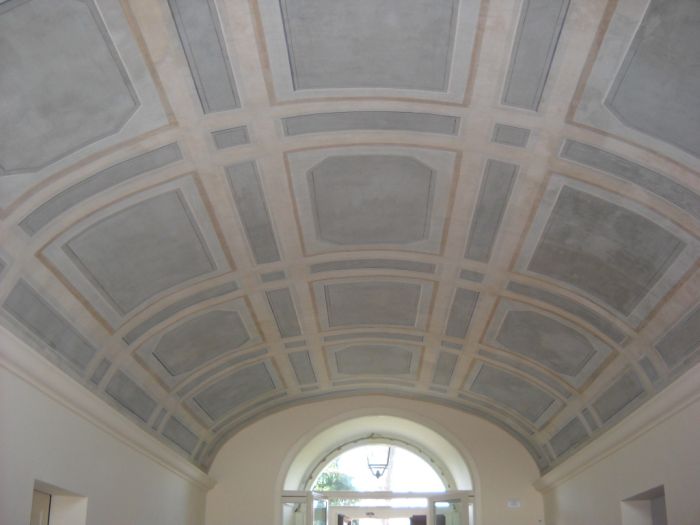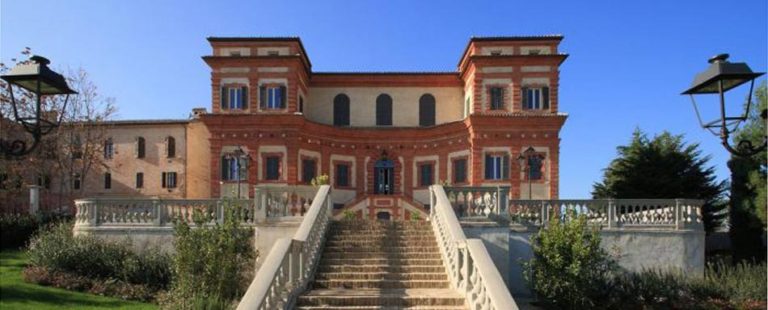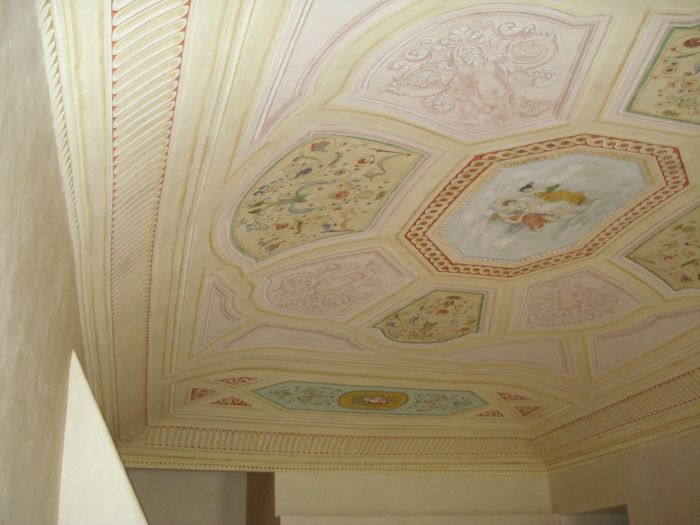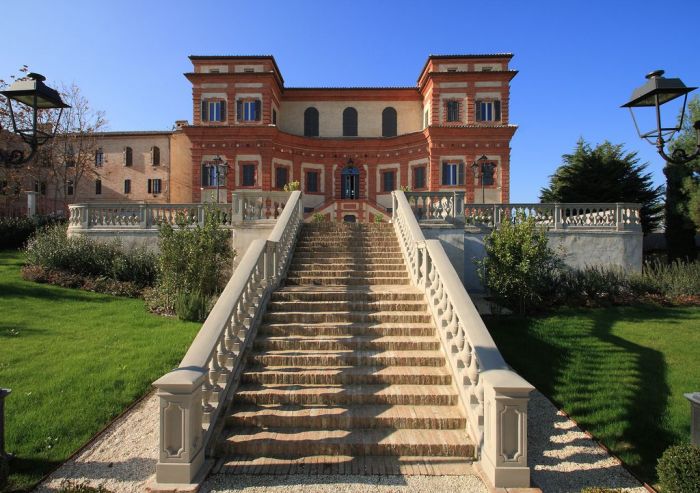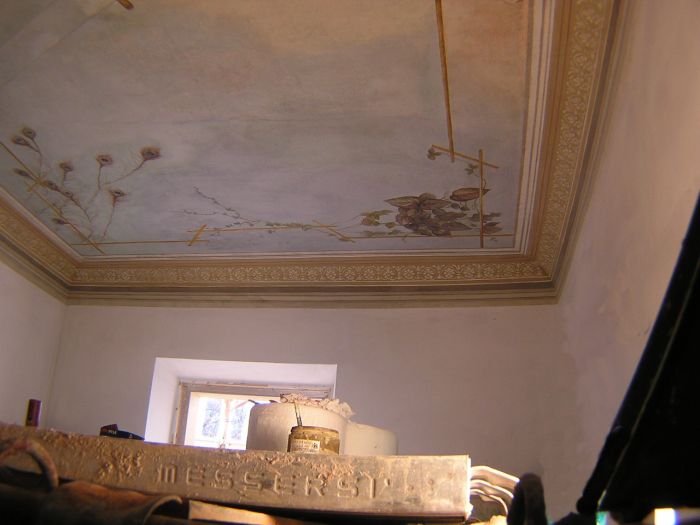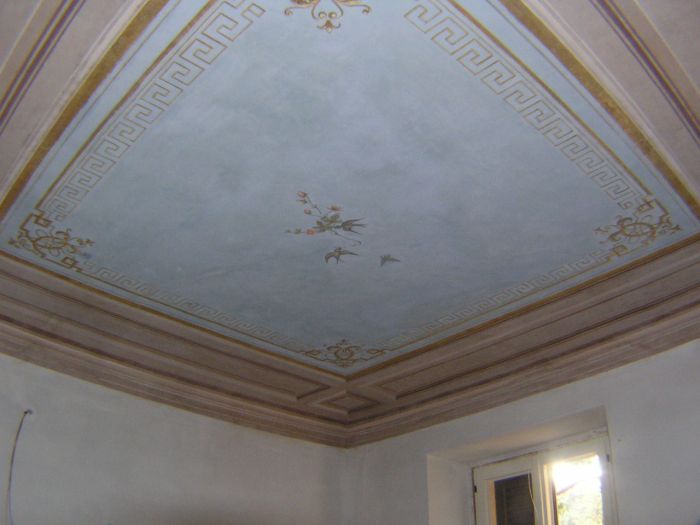Ancient Villa Fabbro: renovation and restoration of a Nineteenth-century villa in Jesi
This ancient villa, located in the present suburbs of Jesi, was averagely built in 1750 and was at the time a hunting lodge of an aristocratic family in the region Marche.
Originally, looking at its façade, only the two side towers were present. A century later, they were united to add another floor, the one with the three arched windows.
Villa Fabbro is bound by the superintendency, because of its historical value, from the park to the frescoes on the main floor. In two centuries of history, the building has become even a spinning mill: in the higher floor, demolishing the attic, all the machines had been placed and the main floor had been used as offices. During the renovation, however, the main floor was rearranged in its original location of a single apartment and, in the attic where the machinery of the spinning mill was located, two real estate units were reconnected with the attics, now they are habitable attics.
The restoration works were difficult, because Villa Fabbro was in a state of decay and neglect, and some sections of the roof had collapsed. In addition to regular maintenance and renovation work, it was decided to add, under the large panoramic terrace, garages and parking spaces to give shelter to the cars without affecting the garden, thus limiting the environmental impact.
As for the house inside it is now completely electronic, with the presence of heated and cooled floors and home automation systems (few cables to allow less disemboweling of the structure). Furthermore, an artificial hill has been created on the right side in which photovoltaic panels have been positioned, in order to allow the necessary power and energy.
The entrance hall is bypass and frescoed, the entire floor has been dismantled and, using the stone of the Gola del Furlo, redone with bichromatic colors to bring it back to its original glory. The windows were made by copying old wooden frames, as happened with the manufacturing of shutters.
A drastic cleaning of the roof was made and no chimney was used to avoid any modification to the architecture of the roof. The facade has been kept curved in bricks, while the upper part is rectilinear, creating a harmonious contrast.
The staircase has also been restored, tracing the original vibrating concrete pillars damaged by time.
The park has been restored but without any cutting of trees, only through pruning. The source in front of the main entrance staircase was then restored. Originally, the source provided water to the Main square of Jesi, where there was a beautiful statue with obelisk and lions, then moved over the years. This happened because the property was 10 meters high from the square.
Ancient Villa Fabbro was originally used as a summer residence, for hunting and to enjoy the beautiful landscape, now unfortunately affected by industry, which has turned the area into an industrial area. Today, in fact, the house is surrounded by houses and streets, but this has not lost its charm at all.

